In the ever-evolving landscape of kitchen appliances, the contact grill has emerged as a favorite among consumers seeking convenience and versatility. This compact cooking device, known for its ability to evenly sear food, has not only captured the attention of culinary enthusiasts but also become a cornerstone in the OEM (Original Equipment Manufacturer) sector. As we delve into the intricacies of this market, it’s clear that understanding the nuances of consumer preferences, technological advancements, and regulatory frameworks is crucial for those navigating the contact grill OEM manufacturing industry. With a focus on growth, challenges, and opportunities, this exploration aims to shed light on the dynamic world of contact grill OEM manufacturing.
Understanding the Contact Grill Market Dynamics
The contact grill market has evolved significantly over the years, reflecting a shift in consumer preferences towards healthier and more convenient cooking methods. Understanding the dynamics of this market is crucial for OEM manufacturers looking to capitalize on the growing demand for these versatile kitchen appliances.
Consumer lifestyles have changed dramatically, with many people seeking quick and easy ways to prepare meals. Contact grills have emerged as a popular choice for their ability to cook food evenly and efficiently, often reducing the need for additional cooking utensils or pans. This trend has been further accelerated by the rise of health consciousness, as contact grills allow for grilling without the addition of excessive fats or oils.
Market research indicates that the contact grill market is experiencing steady growth, driven by a variety of factors. One of the primary drivers is the increasing popularity of outdoor cooking, which has led to a surge in demand for portable and compact grilling solutions. Additionally, the convenience of clean-up, as contact grills typically require less effort to clean compared to traditional grills, has also contributed to their market appeal.
The market for contact grills is diverse, with a wide range of products catering to different consumer needs. Entry-level models are often priced affordably and feature basic functionalities, while premium models may offer advanced features like non-stick surfaces, temperature control, and removable parts for easy cleaning. This segmentation allows manufacturers to target specific consumer groups and meet varying price points.
Geographically, the contact grill market is dominated by regions such as North America and Europe, where the adoption of these appliances is well-established. However, there is also significant potential for growth in emerging markets, as consumers in these regions become more aware of the benefits of contact grills and the convenience they offer.
Innovation plays a pivotal role in shaping the contact grill market. Manufacturers are continuously developing new technologies to improve the cooking experience and enhance product performance. Features such as adjustable heat settings, LED temperature displays, and built-in timers are becoming increasingly common, offering consumers more control over their grilling process.
Another important aspect of the contact grill market is the role of OEM manufacturers. These companies play a critical role in the supply chain, providing custom-designed and branded contact grills to a variety of retail and commercial customers. OEMs often have a competitive edge due to their ability to offer tailored solutions that meet specific market requirements.
The OEM manufacturing process involves close collaboration with clients to understand their brand identity and product specifications. This often includes designing custom grills with unique features, such as specific dimensions, materials, or finishes. OEMs must also ensure that their products comply with international safety standards and regulations, which can vary by region.
As the contact grill market continues to grow, OEM manufacturers face several challenges. One of the most significant is the need to maintain quality while managing costs. The competitive landscape demands that OEMs find ways to optimize production processes without compromising on the durability and reliability of their products.
Moreover, OEMs must stay ahead of the curve when it comes to technology and design. This requires a significant investment in research and development, as well as the ability to quickly adapt to new market trends. For example, the growing trend towards smart kitchen appliances has prompted many OEMs to explore integrating contact grills with digital connectivity and app-based controls.
Despite these challenges, there are ample opportunities for OEM manufacturers in the contact grill market. The continued rise in health awareness and the demand for convenience are likely to drive further growth. Additionally, the expansion of online retail channels has opened up new markets and customer segments, providing OEMs with more opportunities to reach their target audience.
In conclusion, the contact grill market is dynamic and evolving, with numerous opportunities for OEM manufacturers to thrive. By focusing on innovation, quality, and market trends, these companies can position themselves as leaders in the industry and capitalize on the growing demand for contact grills worldwide.
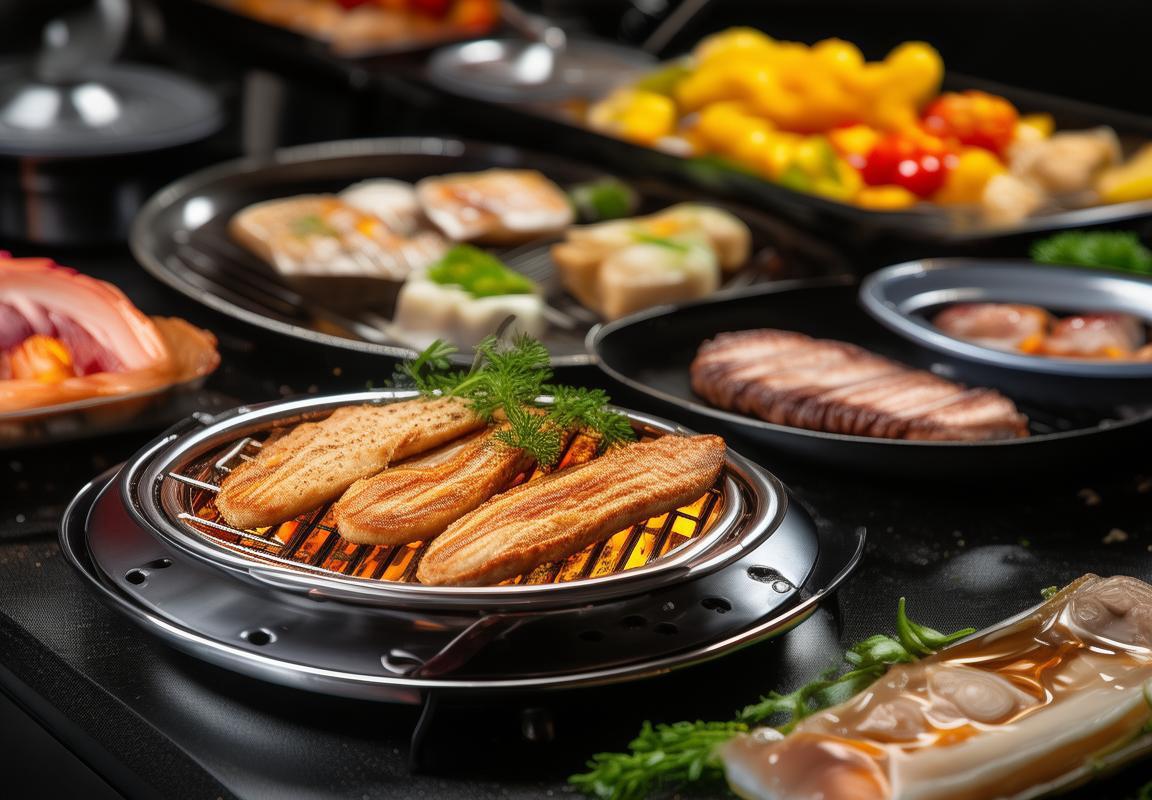
The Rise of Contact Grills in Western Markets
The contact grill, once a niche product in the kitchen appliance market, has seen a remarkable surge in popularity across Western markets. This shift can be attributed to several factors that have converged to make the contact grill a must-have item for many consumers.
In recent years, there has been a significant shift towards healthier cooking methods, and the contact grill has risen as a hero in this movement. With its ability to cook food with minimal oil, it’s a favorite among health-conscious consumers looking to reduce their fat intake. The convenience of grilling indoors, regardless of weather conditions, has also become a major draw for those who appreciate the flexibility of cooking at home.
Moreover, the culinary landscape in Western countries has become increasingly diverse, with a growing number of people embracing different cultural cooking styles. The contact grill’s versatility allows it to mimic the flavors and textures of traditional grilling methods from around the world, from the char-grilled marks of American barbecue to the smoky nuances of Mediterranean dishes.
As the demand for outdoor cooking experiences continues to soar, especially during the warmer months, the contact grill has stepped in to fill the gap for those who may not have access to a traditional grill or outdoor space. It’s a compact, easy-to-use alternative that doesn’t compromise on the taste and satisfaction of outdoor grilling.
The rise of social media and cooking influencers has also played a crucial role in popularizing the contact grill. With countless tutorials and recipes showcasing the grill’s capabilities, consumers are more aware of the product’s benefits and are more likely to consider purchasing one. The “it” factor has been further fueled by high-profile endorsements from celebrity chefs and cooking enthusiasts.
Another key factor is the evolution of the contact grill itself. Modern contact grills are not just cooking surfaces; they are technological marvels. Features like adjustable heat settings, non-stick surfaces, and even built-in timers have made them more user-friendly and adaptable to a wide range of recipes. The ability to sear, sauté, and steam all on one appliance has expanded the grill’s utility far beyond the traditional grilling function.
Additionally, the market has seen a surge in eco-friendly and sustainable products, and contact grills have capitalized on this trend. With energy-efficient designs and the potential for reduced food waste due to precise cooking temperatures, these grills align with the values of environmentally conscious consumers.
The contact grill’s rise in Western markets has also been bolstered by a competitive pricing landscape. As technology has advanced and production costs have decreased, manufacturers have been able to offer high-quality contact grills at more accessible price points. This has made the product more attainable for a broader consumer base.
In conclusion, the contact grill’s popularity in Western markets is a testament to its versatility, health benefits, technological advancements, and its ability to cater to the diverse culinary preferences of modern consumers. As the market continues to evolve, it’s clear that the contact grill is here to stay, and its presence in kitchens across the West is only expected to grow.
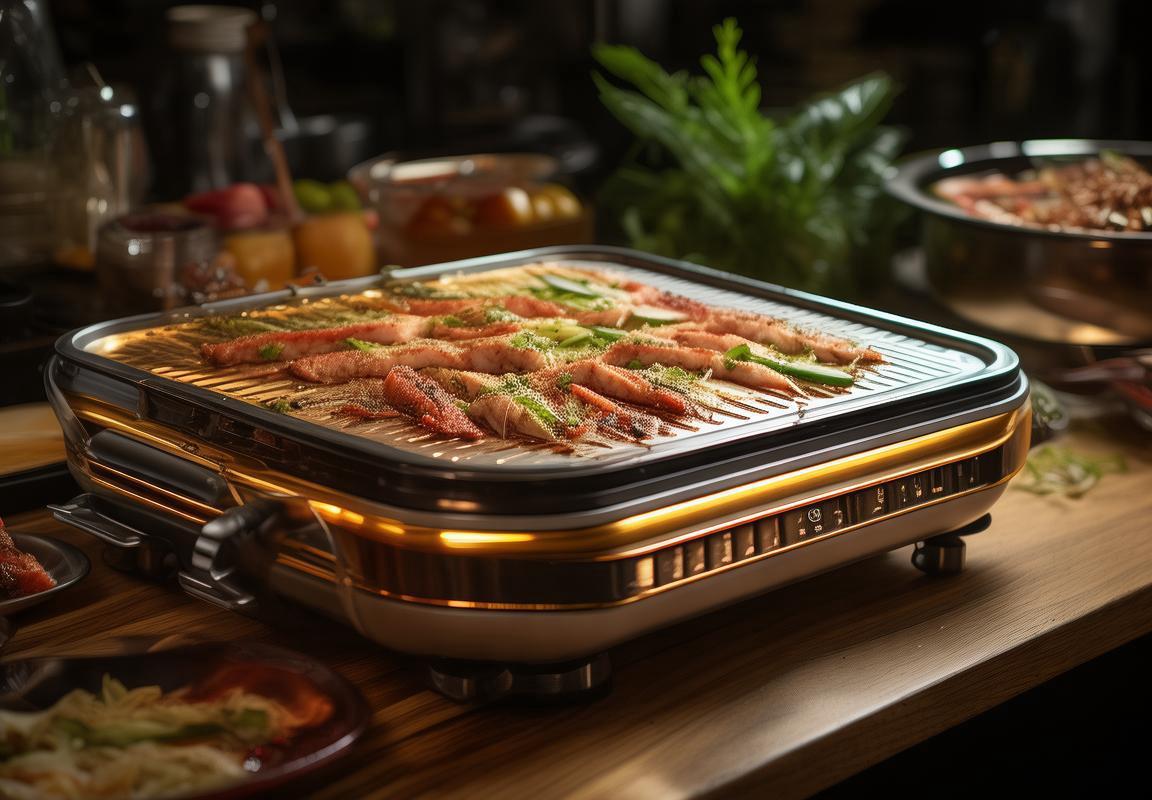
Key Players in the Contact Grill OEM Landscape
The contact grill OEM landscape is a bustling arena with a variety of key players, each bringing their unique strengths and innovations to the table. From established giants to emerging brands, here’s a closer look at some of the key players shaping this dynamic market.
-
Breville: As a household name in kitchen appliances, Breville has made a significant mark in the contact grill OEM sector. Known for their high-quality and user-friendly products, Breville’s grills are often sought after by OEMs looking to offer premium options to their customers.
-
Cuisinart: A brand synonymous with kitchen innovation, Cuisinart has carved out a niche in the contact grill market. Their range of grills, from compact countertop models to larger, more versatile units, appeals to a wide audience, making them a popular choice for OEM collaborations.
-
Hamilton Beach: This brand is renowned for its affordable yet effective kitchen appliances. Hamilton Beach’s contact grills are no exception, offering a cost-effective solution for OEMs aiming to provide budget-friendly options without compromising on performance.
-
George Foreman: The George Foreman brand is an icon in the grill industry, and their contact grills have gained a loyal following. As an OEM manufacturer, George Foreman’s reputation for durability and ease of use makes them a reliable partner for brands looking to enhance their product lines.
-
Secura: Secura is a relative newcomer to the market but has quickly made a name for itself with its innovative designs and commitment to quality. Their contact grills are often chosen by OEMs for their unique features and competitive pricing.
-
Calphalon: Part of the Williams-Sonoma family, Calphalon is a brand that’s synonymous with professional-grade cookware. Their contact grills are well-regarded for their precision engineering and superior performance, making them a top pick for OEMs looking to add a touch of professionalism to their offerings.
-
T-fal: A French brand that has become a global name in cookware, T-fal offers a range of contact grills that cater to different consumer needs. Their commitment to non-stick technology and energy efficiency has made them a go-to for OEMs seeking to provide health-conscious solutions.
-
Sunbeam: With a history of over a century, Sunbeam has been a staple in the appliance industry. Their contact grills are known for their durability and ease of maintenance, making them a trusted choice for OEMs that value reliability.
-
Instant Pot: Although primarily known for its pressure cookers, Instant Pot has expanded its line to include contact grills. Their entry into this market has been well-received, and their brand recognition has made them a desirable partner for OEMs.
-
Black+Decker: This brand is a household favorite for its versatile and durable tools. Black+Decker’s contact grills are often chosen by OEMs for their affordability and robust construction, appealing to a broad consumer base.
Each of these key players brings its own set of strengths to the contact grill OEM landscape, from design and innovation to quality and cost-effectiveness. As the market continues to evolve, these brands are likely to play a crucial role in shaping the future of contact grill manufacturing and consumer preferences.
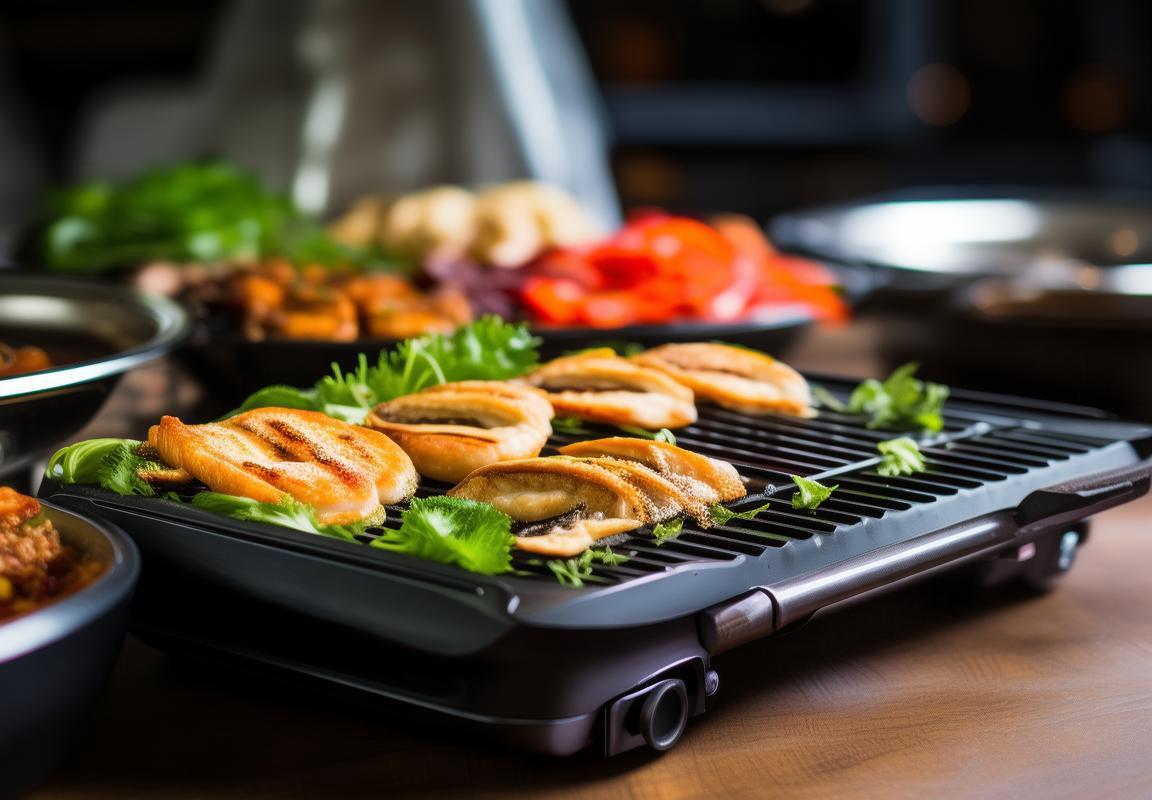
Innovations and Trends in Contact Grill Technology
The contact grill market has seen a surge in technological advancements and innovative features that cater to the evolving demands of consumers. Here’s a glimpse into some of the latest trends and innovations shaping the contact grill technology landscape:
-
Smart Connectivity: Modern contact grills are increasingly integrating smart technology, allowing users to connect their grills to smartphones or tablets. This connectivity enables users to control temperature, cooking times, and even preheat their grills remotely.
-
Enhanced Heat Distribution: One of the key challenges in contact grilling has been achieving even heat distribution. Newer models are now equipped with advanced heating elements and heat distribution plates that ensure a consistent and even cooking surface, reducing the risk of hotspots and undercooked food.
-
Non-Stick Coatings: The search for easier clean-up and healthier cooking has led to the development of non-stick coatings on contact grill surfaces. These coatings not only prevent food from sticking but also reduce the need for excessive oil, making grilling a healthier option.
-
Programmable Settings: Many contact grills now come with programmable settings that allow users to save their favorite cooking temperatures and times. This feature is particularly appealing to those who enjoy grilling but prefer a hands-off approach to cooking.
-
Eco-Friendly Design: As sustainability becomes a growing concern, manufacturers are focusing on eco-friendly designs. This includes the use of energy-efficient heating elements and materials that are recyclable or biodegradable.
-
Temperature Control: Precision temperature control is crucial in contact grilling to achieve the perfect sear without overcooking. New models are incorporating more precise temperature controls, often with digital displays, allowing for greater accuracy in cooking different types of food.
-
Multiple Cooking Functions: contact grills are no longer just for grilling. Many newer models offer a range of cooking functions, such as searing, sautéing, and even baking. This versatility makes them a more appealing option for those looking for a single appliance that can handle various cooking tasks.
-
Safety Features: Safety has always been a priority in kitchen appliances, and contact grills are no exception. New safety features include automatic shut-off when the lid is closed, temperature alerts, and cool-touch handles to prevent burns.
-
Portability and Design: With the rise of outdoor living and tailgating, there’s a trend towards portable contact grills. These compact and lightweight grills are designed for easy transport and are often equipped with foldable legs and carry handles for convenience.
-
Customizable Grilling Plates: Some contact grills now offer interchangeable grilling plates that can be customized for different types of food. These plates might have ridges for better grill marks, a flat surface for steaks, or even a reversible side for grilling vegetables or fish.
-
Health Monitoring: In line with the health-conscious consumer, some contact grill models are now integrating health monitoring features. These might include tracking cooking times and temperatures to ensure the food is cooked to the perfect level of doneness, reducing the risk of harmful bacteria.
-
Interactive Cooking Guides: Some brands are incorporating interactive cooking guides into their contact grills. These guides can provide step-by-step instructions, recipes, and tips for the best grilling experience, enhancing the user experience.
These innovations and trends in contact grill technology are reshaping the way consumers approach outdoor cooking. As the demand for convenience, health, and technology in kitchen appliances continues to grow, it’s likely that we’ll see even more exciting developments in the contact grill market.
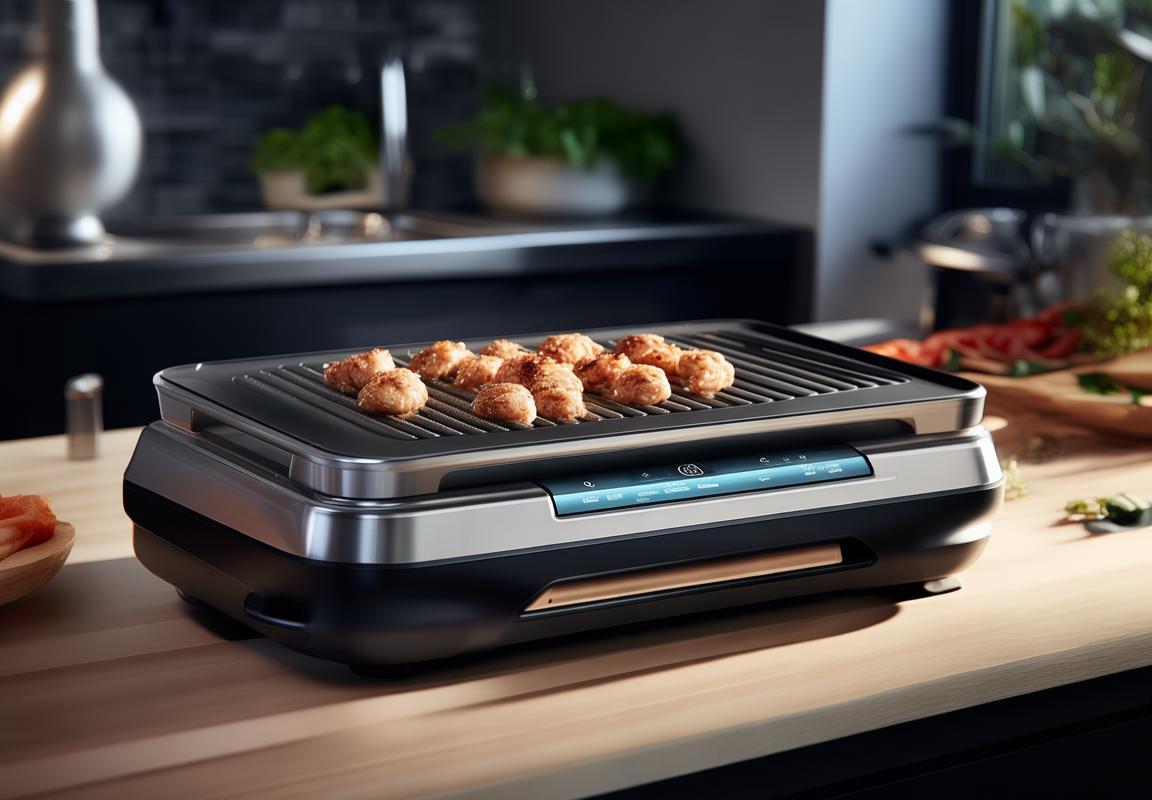
Market Analysis: Size, Growth, and Segmentation
In the evolving landscape of the contact grill market, understanding the size, growth trajectory, and segmentation is crucial for OEM manufacturers to navigate the competitive terrain effectively. The following insights delve into these key aspects.
The market size of contact grills has been expanding consistently, driven by the increasing demand for outdoor cooking experiences and the health-conscious consumer base. As of the latest reports, the global contact grill market is valued at several billion dollars, with significant growth expected in the coming years. This growth is not uniform across regions, with North America and Europe leading the charge due to their well-established barbecue cultures.
Consumer trends have played a pivotal role in the growth of the contact grill market. There’s a noticeable shift towards convenience and efficiency in cooking methods, which contact grills offer. With busy lifestyles and a preference for home-cooked meals, the demand for these appliances has surged. The market size reflects this trend, with a steady increase in sales volumes and revenue.
In terms of segmentation, the contact grill market can be broken down into various categories based on factors such as type, material, and price range. For instance, the type segmentation includes countertop, portable, and built-in grills. Each category has its own set of target consumers and market dynamics.
Countertop contact grills are the most popular due to their ease of use and versatility. They cater to a broad audience, from individuals living in apartments without outdoor space to families looking for a quick and easy way to cook meals. The material segmentation includes stainless steel, cast aluminum, and ceramic, each with its own appeal in terms of durability, heat retention, and aesthetic.
Price range segmentation is equally important, as it helps in identifying the different segments of the market. Entry-level models typically range from $50 to $150, targeting budget-conscious consumers. Mid-range grills, priced between $150 and $300, offer additional features and are aimed at those seeking a balance between quality and price. High-end models, priced above $300, come with advanced features such as adjustable heat settings, non-stick surfaces, and ergonomic designs.
Geographically, the market is segmented by region, with North America and Europe being the largest markets. The U.S. and Germany are key players in the European market, driven by their strong barbecue traditions and a preference for outdoor living. Asia-Pacific is expected to see significant growth due to a growing middle class and a surge in health-conscious consumers.
The growth rate of the contact grill market is influenced by several factors. Technological advancements, such as the introduction of induction heating and smart grill features, are driving innovation and attracting new customers. Additionally, the rise of health awareness has led to an increased interest in cooking methods that promote healthy eating habits, such as contact grilling, which reduces the need for additional fats and oils.
Another driver of growth is the expansion of the market into new demographics. For instance, the elderly demographic is growing, and contact grills offer a hands-free cooking solution that can be particularly appealing to this group. Moreover, the trend towards outdoor cooking and social gatherings, especially post-pandemic, has further fueled the demand for contact grills.
In conclusion, the contact grill market is experiencing robust growth, with a diverse range of segments catering to various consumer needs. The market size and growth rate reflect the dynamic nature of consumer preferences and the continuous innovation in contact grill technology. OEM manufacturers looking to capitalize on this trend must stay abreast of these segments and adapt their offerings to meet the evolving demands of the market.
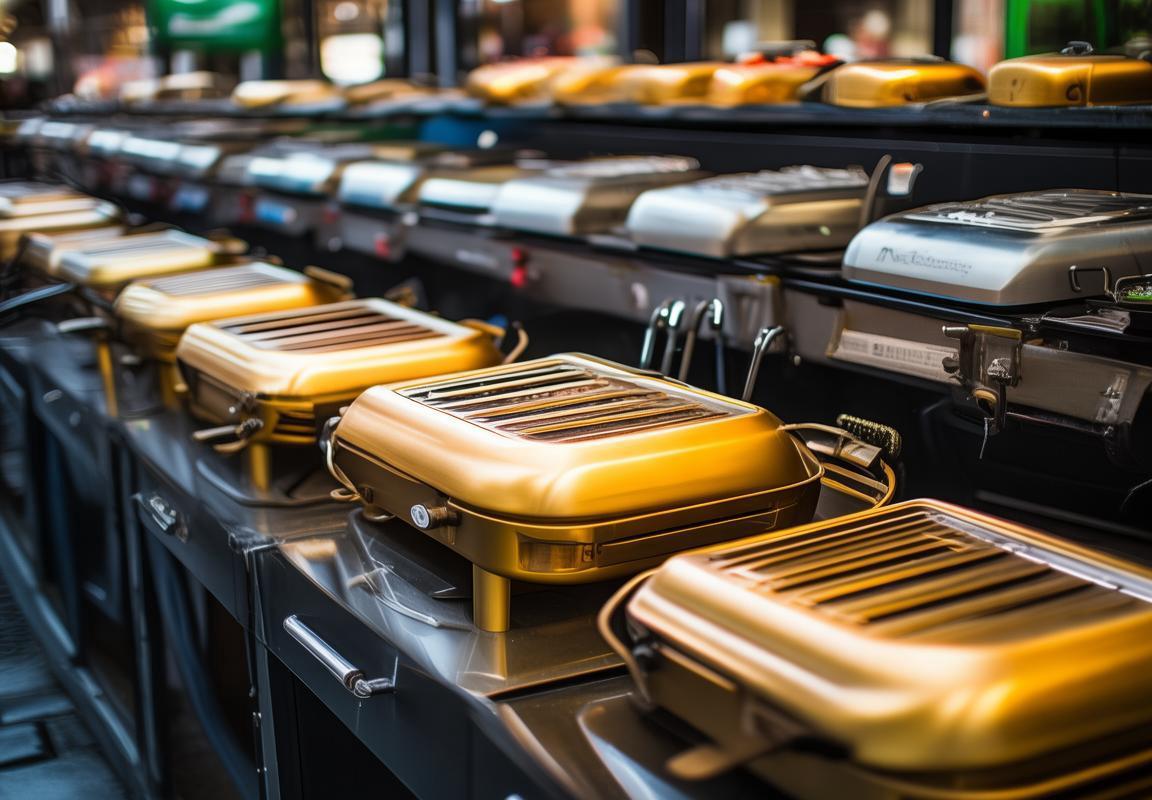
Supply Chain and Manufacturing Insights
In the dynamic world of contact grill OEM manufacturing, the supply chain and manufacturing process play a pivotal role in ensuring the quality and efficiency of products. From raw materials to finished goods, here’s an in-depth look at the intricate web of operations that keep the contact grill industry running smoothly.
The sourcing of raw materials is a critical first step in the supply chain. High-quality stainless steel, aluminum, and other metals are essential for the construction of contact grills. Suppliers must be vetted for their ability to provide materials that meet the stringent standards set by OEM manufacturers. This often involves a global search, with suppliers from countries like China, India, and Turkey known for their metal processing capabilities.
Once the materials are sourced, the manufacturing process begins. It’s a complex series of steps that includes cutting, bending, welding, and assembly. Advanced machinery and robotic technology are often employed to ensure precision and consistency. The efficiency of this process is key, as it directly impacts the cost and lead time for OEMs.
Quality control is woven into every stage of the manufacturing process. From the initial inspection of raw materials to the final product assembly, there are numerous checks to ensure that each contact grill meets the required specifications. This rigorous approach is particularly important in the contact grill market, where safety and performance are paramount.
The logistics of supply chain management are equally important. OEMs must coordinate with manufacturers to ensure that parts and components are delivered on time. This often involves managing multiple suppliers and shipping schedules, which can be a logistical challenge. Efficient inventory management is crucial to avoid stockouts and overstocking, which can tie up capital and lead to increased lead times.
Another key aspect of the supply chain is the relationship with distribution partners. These partners play a vital role in getting the finished products to market. They must be reliable and capable of handling the demands of different regions and customer segments. OEMs often work with a network of distributors who specialize in different market channels, from retail to online sales.
In recent years, there has been a growing trend towards sustainability in the supply chain. OEMs are increasingly looking for suppliers who use eco-friendly practices and materials. This includes sourcing recycled metals, reducing waste, and minimizing the carbon footprint. These initiatives are not only good for the environment but also for the brand reputation of the OEMs.
The global nature of the contact grill market means that OEMs must navigate various regulatory environments. Each country has its own set of import/export rules, safety standards, and certifications that products must comply with. This requires a deep understanding of international trade and compliance procedures.
Innovation in the manufacturing process is a constant goal for OEMs. This includes the adoption of new technologies that can streamline operations and reduce costs. For example, the integration of IoT (Internet of Things) into the production line can provide real-time data on machine performance and predict maintenance needs, leading to improved efficiency.
The complexity of the supply chain and manufacturing process is further compounded by the diverse range of products offered by OEMs. From countertop grills to commercial-grade units, each product type requires a tailored approach to manufacturing and supply. This segmentation means that OEMs must manage multiple supply chains, each with its unique challenges and requirements.
Lastly, the human element cannot be overlooked. The skilled labor force is the backbone of the manufacturing process. Training and development programs are essential to ensure that employees have the knowledge and skills needed to produce high-quality contact grills. Employee satisfaction and retention are also critical, as a stable workforce is less likely to experience disruptions in production.
In conclusion, the supply chain and manufacturing insights of contact grill OEMs are a testament to the intricate balance required to produce a high-quality product. From sourcing materials to ensuring compliance with international regulations, every step is crucial in delivering a product that meets the demands of a competitive market.
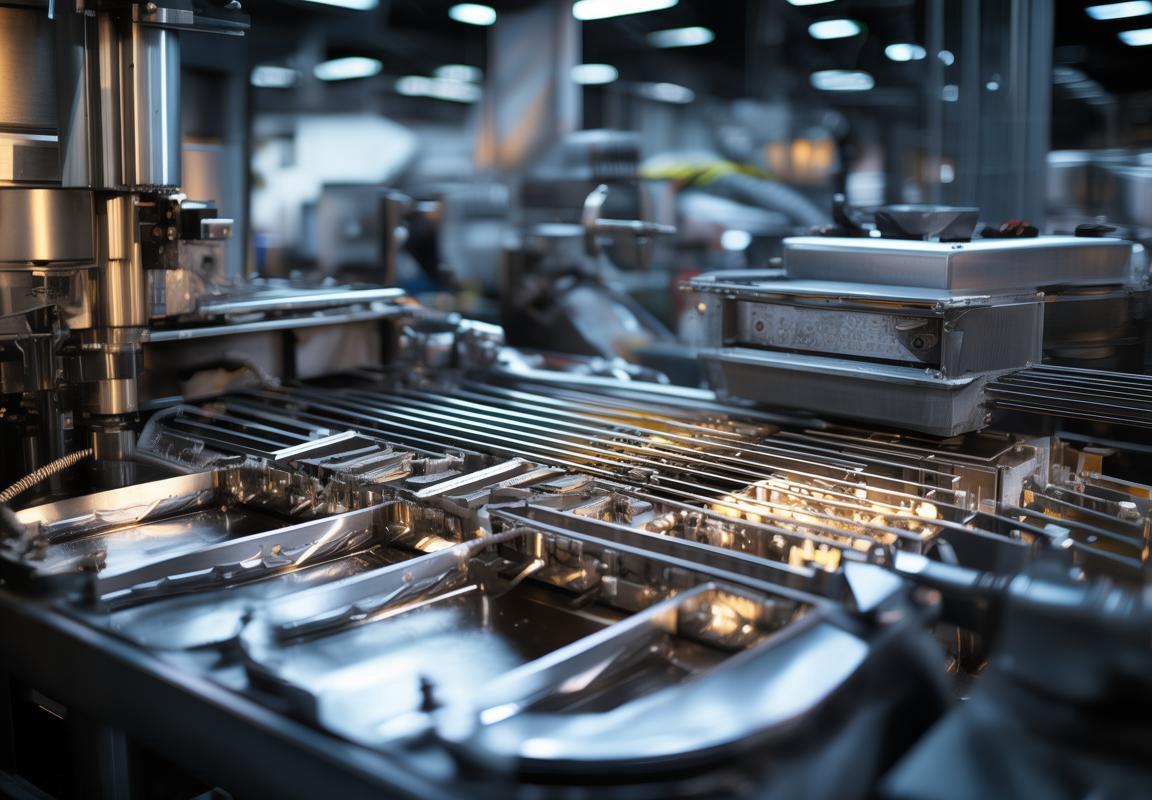
Challenges and Opportunities for OEM Manufacturers
In the ever-evolving landscape of Original Equipment Manufacturing (OEM) for kitchen appliances, contact grill manufacturers face a myriad of challenges and opportunities. Navigating these complexities requires a keen understanding of market demands, technological advancements, and the intricate balance between innovation and cost-effectiveness.
The competitive landscape is marked by relentless innovation, with consumers seeking more than just a cooking appliance. They’re looking for smart, efficient, and versatile products that enhance their culinary experience. For OEM manufacturers, this translates into a need for constant adaptation and improvement.
One challenge lies in the rapid pace of technological advancements. As new materials and technologies emerge, OEMs must stay abreast of these changes to maintain a competitive edge. This means investing in research and development to incorporate features like non-stick coatings, advanced heat distribution systems, and energy-efficient designs.
Moreover, the demand for customization and personalization is on the rise. Consumers no longer just want a standard product; they desire something that fits their specific needs and preferences. This trend pushes OEMs to offer a wider range of options, from different sizes and shapes to various heat settings and temperature controls.
Another challenge is the fluctuating raw material costs. Metals like stainless steel and aluminum, which are commonly used in contact grill manufacturing, can experience significant price swings due to global supply chain disruptions. Managing these costs while maintaining quality and innovation is a delicate balancing act.
Despite these challenges, there are numerous opportunities for OEM manufacturers. One such opportunity is the global market expansion. As the popularity of contact grills continues to grow, there is a significant opportunity to tap into new markets, particularly in regions where outdoor cooking is a cultural norm.
Sustainability is another area ripe for opportunity. With environmental concerns at the forefront of consumer minds, OEMs can differentiate themselves by offering eco-friendly options, such as grills made from recycled materials or those that consume less energy.
The integration of smart technology presents yet another opportunity. By incorporating features like Bluetooth connectivity, grills can become part of a broader smart kitchen ecosystem, allowing users to control and monitor their cooking process remotely. This not only enhances the user experience but also opens up new avenues for data analytics and personalized cooking tips.
Furthermore, the rise of health consciousness has led to an increased demand for healthier cooking methods. Contact grills, with their ability to cook with less oil, are perfectly positioned to cater to this trend. OEMs can leverage this by promoting their products as a healthier alternative to traditional grilling methods.
Opportunities also arise from the need for efficient manufacturing processes. As the industry becomes more competitive, OEMs must find ways to streamline their operations to reduce costs and improve productivity. This could involve investing in automation, adopting lean manufacturing principles, or seeking out new, cost-effective suppliers.
The challenge of maintaining quality while scaling operations is also an opportunity for OEMs to refine their quality control processes. By implementing stricter standards and more rigorous testing, manufacturers can ensure that their products meet the highest quality expectations.
In conclusion, the challenges and opportunities for OEM manufacturers in the contact grill market are interconnected. While technological advancements, customization demands, and fluctuating raw material costs pose significant challenges, they are also accompanied by opportunities for market expansion, sustainability, smart technology integration, health-conscious innovation, operational efficiency, and quality control refinement. Navigating these complexities successfully will require a strategic approach that balances innovation with cost management and customer satisfaction.
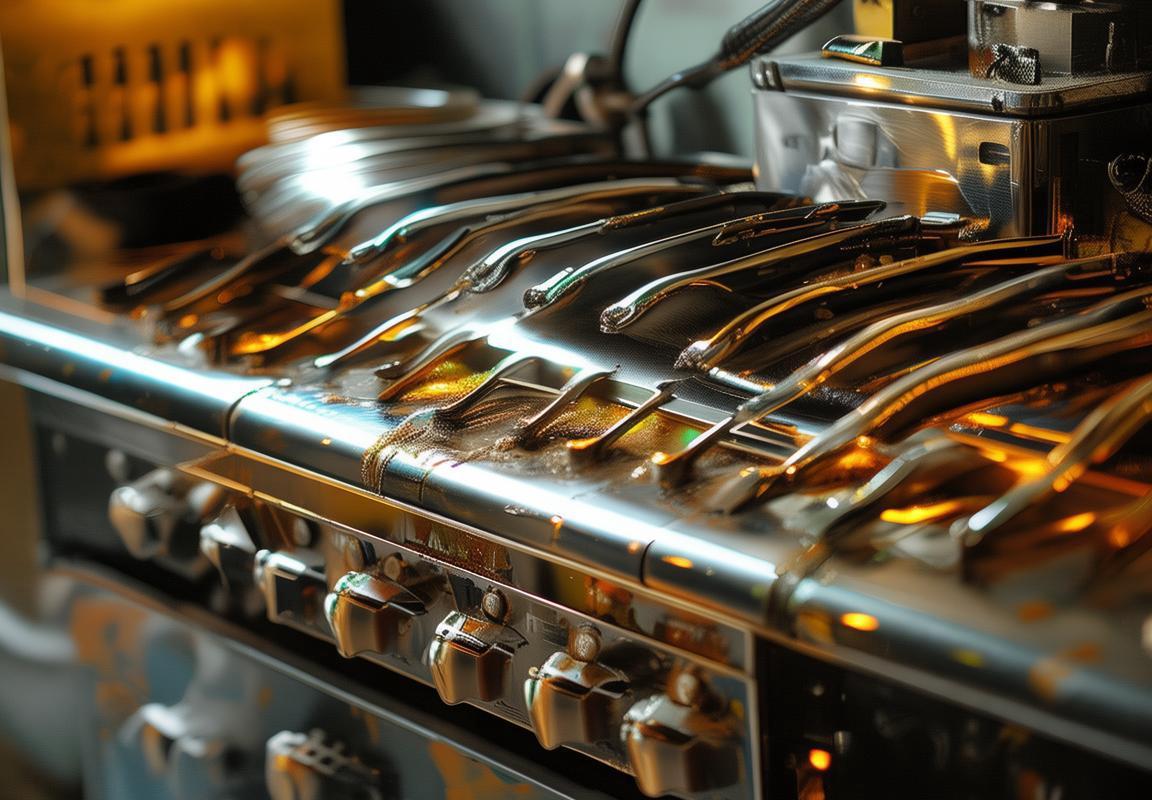
Consumer Preferences and Demographics
Consumer preferences and demographics in the contact grill market have evolved significantly over the years, shaping the landscape for OEM manufacturers. Here’s an in-depth look at these factors:
In recent years, there’s been a notable shift in consumer preferences towards healthier cooking methods. Contact grills, with their ability to cook food with minimal oil, have become increasingly popular. This trend is driven by a growing awareness of heart-healthy cooking and a desire for lower-calorie meals.
Millennials and Gen Z consumers, who are more health-conscious and environmentally aware, are leading this trend. They are drawn to the convenience and efficiency of contact grills, which often come with features like adjustable heat settings and non-stick surfaces. These features not only cater to their preference for quick and easy meals but also align with their values regarding sustainability and wellness.
The rise of outdoor cooking enthusiasts has also played a significant role in shaping consumer preferences. Contact grills are a favorite among those who enjoy backyard barbecues and camping trips. The portability and ease of use of these grills make them a practical choice for outdoor enthusiasts looking to replicate the flavor of outdoor cooking at home.
Demographically, the contact grill market is seeing a diverse range of consumers. Families are turning to contact grills for their versatility and ability to cook a variety of dishes, from vegetables to meats, all in one appliance. This has expanded the market beyond single individuals and young professionals to include larger households.
The aging population is another demographic group that is influencing the contact grill market. As people age, they often seek cooking methods that are easier on the joints and require less physical effort. Contact grills, with their even heat distribution and hands-free cooking, offer a solution that appeals to this demographic.
Cultural diversity is also a key factor. Different cultures have different preferences when it comes to cooking, and contact grills offer a flexible platform to accommodate a wide range of culinary styles. From the Asian market’s fondness for searing meats to the Mediterranean’s preference for grilling vegetables, contact grills are becoming a universal kitchen tool.
In terms of features, consumers are increasingly looking for smart technology integration. Smart contact grills that can be controlled via a smartphone app are becoming more popular, as they offer convenience and the ability to monitor cooking times and temperatures remotely.
Another important preference is the material and design of the grill. Consumers are gravitating towards grills made from high-quality, durable materials that offer easy maintenance and long-lasting performance. The design also plays a role, with sleeker, modern aesthetics becoming more appealing in the kitchen.
In conclusion, consumer preferences and demographics in the contact grill market are multifaceted, driven by a combination of health consciousness, convenience, and cultural diversity. OEM manufacturers must stay attuned to these changing dynamics to create products that resonate with a broad and evolving consumer base.
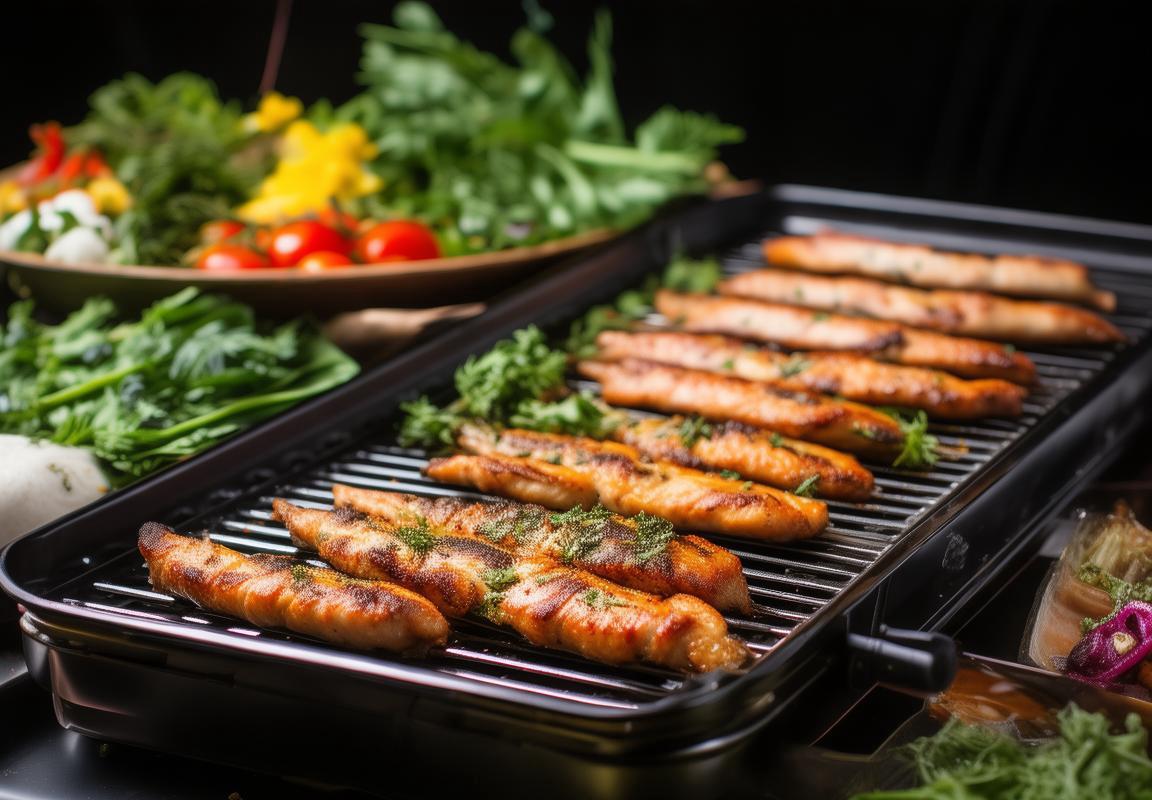
Regulatory Environment and Standards
In the evolving landscape of kitchen appliances, the regulatory environment and standards play a pivotal role in shaping the production and distribution of contact grills. These factors not only ensure consumer safety but also drive innovation and quality within the OEM manufacturing sector. Here’s an insight into the regulatory intricacies and standards that govern this market.
The International Organization for Standardization (ISO) has established global standards for various aspects of kitchen appliances, including contact grills. These standards cover electrical safety, material specifications, and performance criteria. Compliance with these ISO standards is a prerequisite for OEM manufacturers looking to export their products internationally.
Electrical safety is a paramount concern, especially with appliances that involve high temperatures and direct contact with food. Manufacturers must adhere to strict guidelines to prevent electric shocks and fires. This includes using materials that can withstand high temperatures without melting or emitting harmful fumes.
Material standards dictate the types of metals and plastics used in the construction of contact grills. For instance, stainless steel is favored for its durability and resistance to corrosion, while certain plastics must meet flame-retardant requirements to prevent accidental fires.
In addition to ISO standards, individual countries have their own regulatory bodies that enforce local safety codes. The United States, for example, has the Underwriters Laboratories (UL) and the Consumer Product Safety Commission (CPSC), which set strict regulations for electrical appliances.
The UL certification is a mark of quality and safety that many consumers look for when purchasing kitchen appliances. It ensures that the contact grill has passed rigorous testing for electrical, thermal, and fire safety. Similarly, the CPSC enforces rules that protect consumers from hazardous products, including those that pose a risk of burns or electrical shock.
Regulations also extend to the labeling and marketing of contact grills. Manufacturers must provide clear and accurate information about the appliance’s features, usage instructions, and safety precautions. This includes warning labels about the risk of burns and proper maintenance guidelines.
Environmental regulations are another area that OEM manufacturers must navigate. With the growing emphasis on sustainability, there is an increasing demand for appliances that are energy-efficient and environmentally friendly. This means using materials that are recyclable or biodegradable and ensuring that the manufacturing process minimizes waste and emissions.
The European Union (EU) has its own set of regulations, notably the Restriction of Hazardous Substances (RoHS) directive, which limits the use of certain hazardous materials in electrical and electronic equipment. The RoHS directive ensures that contact grills and other kitchen appliances do not contain lead, cadmium, mercury, hexavalent chromium, polybrominated biphenyls (PBBs), or polybrominated diphenyl ethers (PBDEs).
In the realm of health and hygiene, contact grill manufacturers must also comply with food safety standards. This involves using materials that do not leach harmful chemicals into the food and ensuring that the appliance is easy to clean and maintain.
The complexity of these regulations can be daunting for OEM manufacturers, especially those that operate on a global scale. However, they also present opportunities for differentiation and market advantage. By embracing these standards, manufacturers can build trust with consumers, gain access to new markets, and contribute to a more sustainable future.
One opportunity arises from the need for continuous improvement in safety and efficiency. Manufacturers that invest in research and development to meet the latest standards can create innovative products that stand out in a crowded market. This can lead to increased sales and a competitive edge over those who do not prioritize compliance.
Another opportunity lies in the certification process itself. By obtaining certifications like UL or CE (Conformité Européenne), manufacturers can use these credentials as marketing tools to demonstrate their commitment to quality and safety. This can attract customers who are willing to pay a premium for reliable and compliant products.
In conclusion, the regulatory environment and standards for contact grills are multifaceted, encompassing safety, environmental, and health considerations. While they pose challenges, they also offer valuable opportunities for OEM manufacturers to innovate, differentiate their products, and build a reputation for excellence in the global market.

Predictions for the Future of Contact Grill OEM Manufacturing
The landscape of contact grill OEM manufacturing is poised for significant transformations, driven by evolving consumer demands, technological advancements, and shifting market dynamics. As we look ahead, several predictions emerge that could redefine the future of this industry.
Innovation in Materials and DesignMaterials science continues to play a pivotal role in contact grill manufacturing. There’s an increasing trend towards the use of high-quality, durable materials that not only enhance the longevity of the grills but also improve cooking performance. Expect to see a surge in the development of non-stick coatings that are more resistant to wear and tear, as well as grills with advanced heat distribution systems that prevent hotspots and ensure even cooking.
Sustainability and Eco-Friendly PracticesWith growing environmental concerns, OEM manufacturers are under pressure to adopt more sustainable practices. This could lead to the rise of eco-friendly materials, energy-efficient manufacturing processes, and grills that are designed for easy recycling at the end of their life cycle. The market is likely to see a shift towards more sustainable packaging and reduced carbon footprints in the supply chain.
Smart and Connected GrillsThe integration of smart technology is expected to become a norm in contact grill manufacturing. Grills with built-in sensors, Wi-Fi connectivity, and companion apps are likely to become more prevalent, offering users the ability to monitor and control their cooking process remotely. This trend could open up new opportunities for data analytics, allowing manufacturers to tailor their products to individual consumer preferences and usage patterns.
Customization and PersonalizationAs consumers become more discerning, there’s a growing demand for personalized products. OEM manufacturers may need to invest in flexible production lines that can accommodate a wider range of customization options, from different grill sizes and shapes to specialized cooking surfaces. This could involve the development of modular components that can be easily swapped out to cater to specific customer needs.
Global Expansion and Market DiversificationThe contact grill market is not limited to a single region; it’s a global phenomenon. OEM manufacturers will likely see opportunities to expand into new markets, particularly in Asia and South America, where there’s a growing middle class with increasing disposable income. Diversifying product lines to cater to local tastes and preferences will be crucial for success in these regions.
Regulatory Compliance and SafetyWith the rise of health and safety concerns, compliance with international standards will be paramount. OEM manufacturers must stay abreast of evolving regulations, particularly those related to food safety and electrical appliances. This may involve investing in quality control systems and obtaining certifications that ensure products meet the highest safety standards.
Collaboration and PartnershipsTo stay competitive, OEM manufacturers may seek strategic partnerships with technology companies, ingredient suppliers, and even foodservice providers. Collaborations could lead to the development of innovative new products, such as grills that are designed to work with specific types of food or that integrate seamlessly with other kitchen appliances.
Consumer Education and MarketingAs the market becomes more saturated with options, effective marketing and consumer education will become increasingly important. Manufacturers may need to invest in educational campaigns that highlight the benefits of contact grilling and how to use the appliances to their full potential. This could involve online tutorials, social media engagement, and partnerships with influencers and chefs.
E-commerce and Direct-to-Consumer SalesThe rise of e-commerce has opened up new avenues for OEM manufacturers to reach consumers directly. As online sales platforms become more sophisticated, expect to see a greater emphasis on direct-to-consumer models, allowing manufacturers to build direct relationships with customers and gather valuable feedback that can inform future product development.
Technological Integration with Other AppliancesThe future of contact grill OEM manufacturing may involve the integration of grills with other kitchen appliances, creating a more cohesive and efficient cooking experience. For example, grills that can be connected to refrigerators or ovens for a seamless cooking process could become a reality, offering consumers a more integrated kitchen environment.
Adaptation to Changing Consumer LifestylesConsumer lifestyles are changing rapidly, and OEM manufacturers will need to adapt their products to meet these shifts. This could mean developing compact grills for smaller living spaces, or grills that are easy to transport for those who enjoy outdoor cooking or traveling. The ability to adapt to these changing needs will be a key factor in the success of contact grill OEMs in the future.